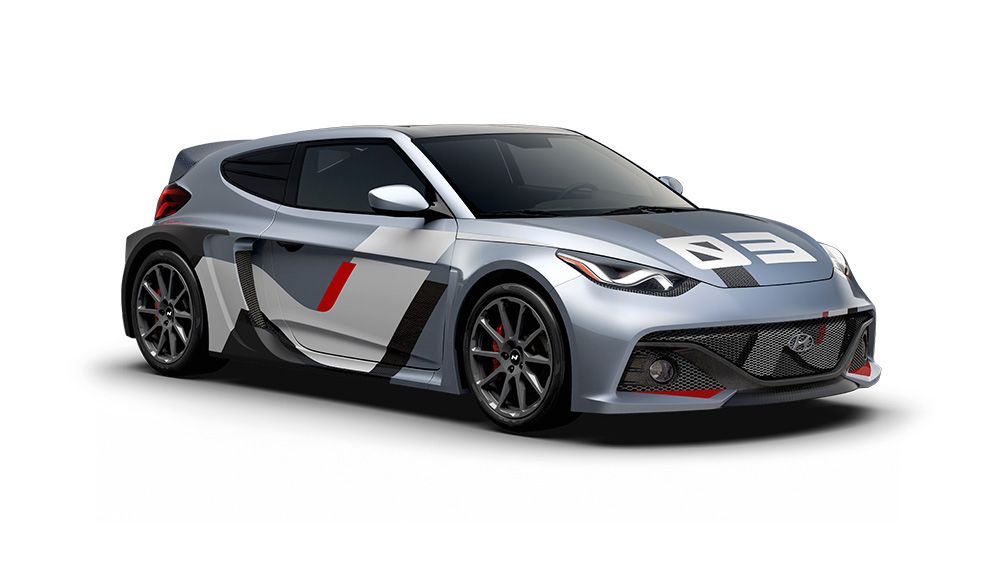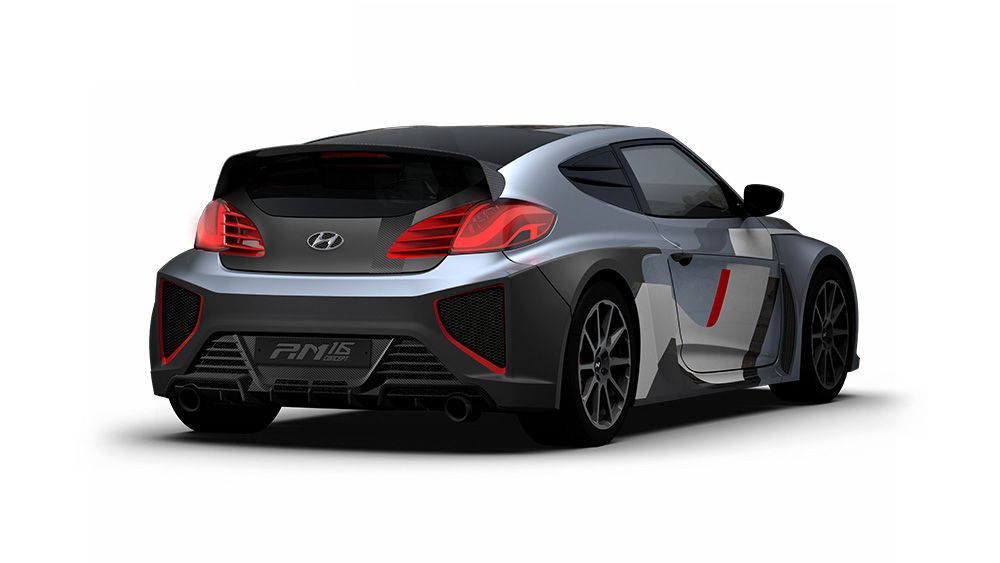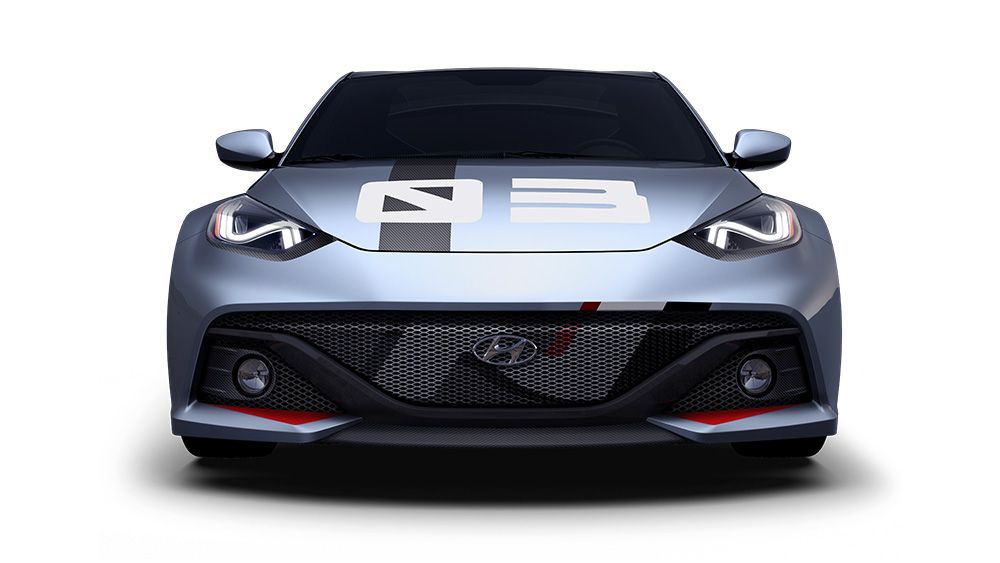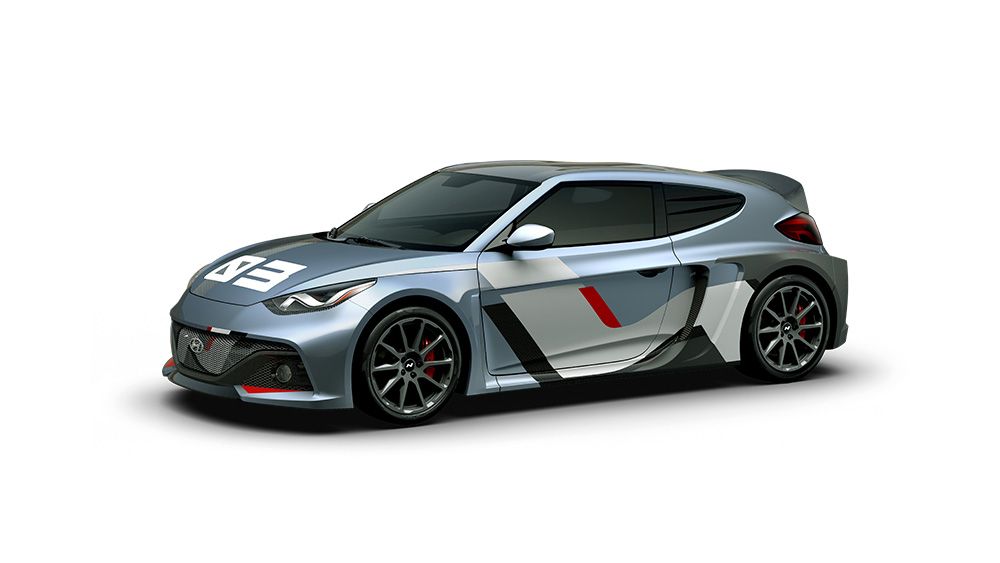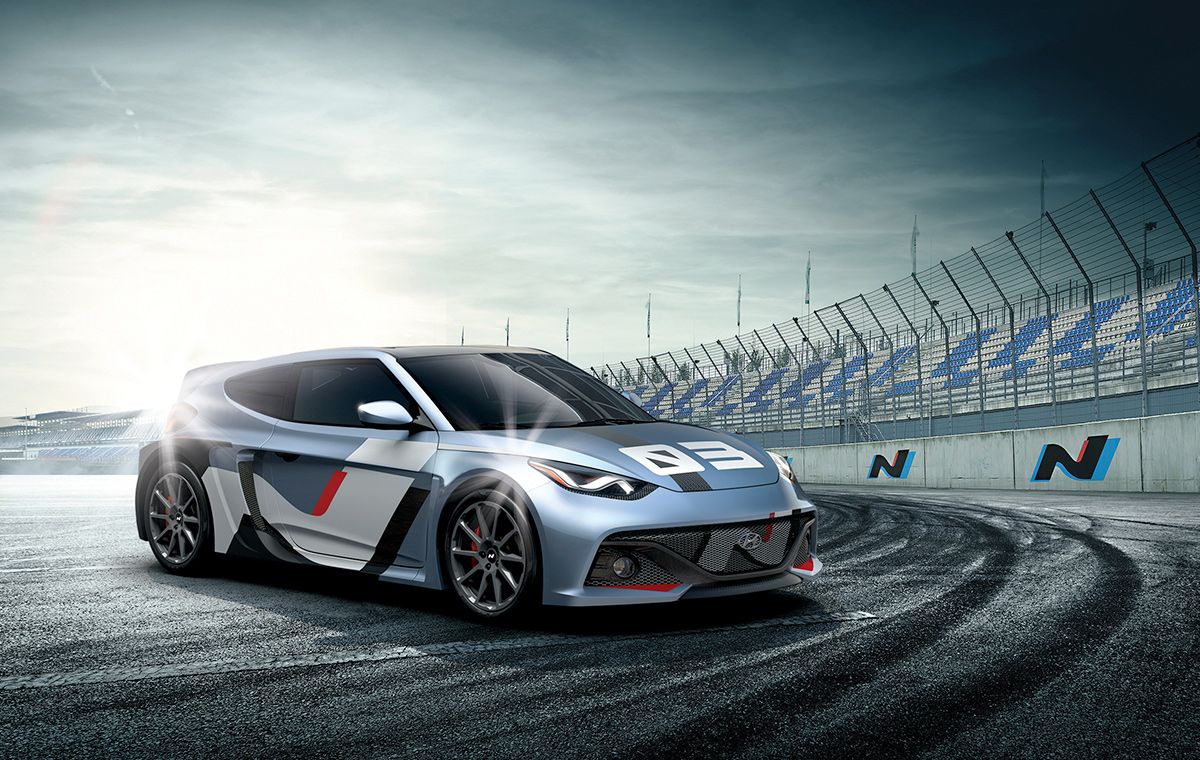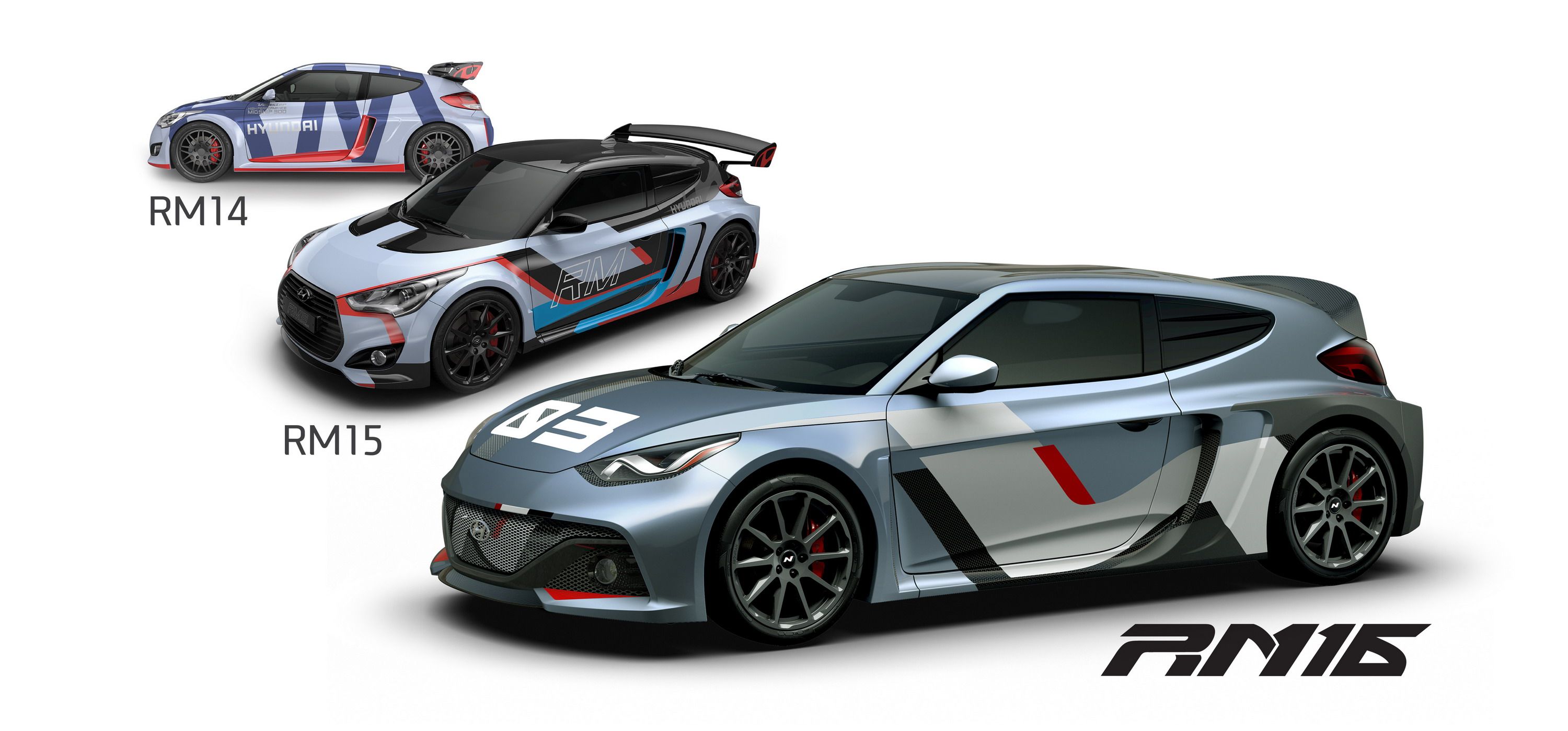In 2013, Hyundai announced plans to launch N Performance, a sub-brand that will develop performance-oriented versions of the company's existing products and handle its ambitious World Rally Championship program. Three years have passed since then and we have yet to see N-badged cars on the road, but that's not to say that Hyundai hasn't been working hard to achieve its goals. The Koreans have made tremendous progress in the World Rally Championship and unleashed a handful of race-inspired concepts as of 2016. Its latest creation goes by the name RM16 and was unveiled to the world at the 2016 Busan International Motor Show in South Korea.
Essentially a new development of the Racing Midship (RM) program that debuted in 2012, the Hyundai RM16 follows in the footsteps of the RM14 and RM15, which were showcased in 2014 and 2015, respectively.
"RM models will continue to play an important role as the ‘rolling lab’ in the development of our future high-performance ‘N’ cars," said Albert Biermann, head of Hyundai's Vehicle Test & High-Performance Development.
Although the Korean brand declined to say how much of the RM16 will make it on a production model, it is believed that the upcoming i30 N will be heavily based on this concept car. And, with the performance hatchback reportedly scheduled to arrive in 2017, the RM16 might be the last show car to preview the production model. But until Hyundai launches its first N-badged car, let's have a closer look at what the RM16 adds to the previous Racing Midship concept.
Continue reading to learn more about the Hyundai RM16 Concept.
2016 Hyundai RM16 Concept
- Make: Array
- Model: 2016 Hyundai RM16 Concept
- Engine/Motor: inline-4
- Horsepower: 296
- Torque: 282
- [do not use] Vehicle Model: Array
Exterior
Much like the RM15 before it, the RM16 is based on the Hyundai Veloster. That may seem awkward given that the brand's first production model will be based on the i30, but it makes some sense given that the show car has a midship configuration.
Compared to the previous RM car, the RM16 is quite different except for the side body panels and roof section. Whereas the RM15 had the front grille, headlamps, and hood sourced directly from the production Veloster, the RM16 sports unique features that have nothing in common with the hatchback. The headlamps are slimmer and feature wavy LED lights, while the large grille was removed altogether and the hood extended toward the bumper. Below, the bumper is essentially a big, wide intake that incorporates a carbon-fiber element that bares a mild resemblance to the company's trademark grille.
The side panels are pretty much the same if we ignore the mildly altered upper sections of the front fenders due to the revised hood. The rear fender intake, the wide wheel arches, the side skirts, and wheels are identical, but that's not necessarily a bad thing as it could mean that Hyundai finally found the perfect recipe in this area.
More modifications are visible around back, where the RM16 ditched the standard Veloster taillights in favor of clusters with wavy LED patterns matched to that of the headlamps. Unlike the standard Veloster, the concept's taillights extend into the tailgate, which features two nearly triangular cavities with red backgrounds and grille-like elements. A major change compared to the RM15 is the lack of a fixed wing. Instead, the the RM16 features a big tailgate spoiler made from carbon-fiber. The bumper is also a lot more aggressive, featuring massive side vents and a motorsport-inspired diffuser with big outlets at each corner.
All these modifications were made to improve the concept's aerodynamics and downforce and give the RM16 a menacing appearance that reminds me of the Group B rally cars of the 1980s.
Interior
Hyundai had nothing to say about the RM16's interior other than the fact that it comes with a bolstered driver's seat, but that's not surprising given that the previous concepts were introduced the same way. There are no photos either, but a vehicle like this would likely feature a race-inspired cockpit with a digital instrument cluster, lightweight door panels, a flat-bottom steering wheel, and plenty of carbon-fiber.
Drivetrain
Just like its predecessors, the RM16 gets its juice from a beefed-up version of Hyundai's tried-and-true 2.0 T-GDI engine. The turbocharged four-banger cranks out 296 horsepower and 282 pound-feet of torque, which are sent to the wheels through a six-speed manual transmission. Performance specs have yet to be unveiled, but expect the RM16 to be at least a tenth-second quicker than the RM15, which achieved the 0-to-62 mph sprint in an impressive 4.7 seconds.
Arguably the most impressive highlight of this Veloster-based concept is the midship engine configuration. This gives the hatchback a 43-57 front-rear weight distribution and a center of gravity of less than 19.68 inches from the ground.
While the unit, transmission, and spaceframe were carried over from the RM15, the RM16 received an electric supercharger for enhanced engine responsiveness, an electronic limited slip differential that distributes optimal power to each wheel when turning, and an automatically controlled rear spoiler to optimize aerodynamics according to different driving conditions.
The concept also sports an electronically-variable exhaust system, which provides a powerful note that matches the car's acceleration.
Conclusion
A significant departure compared to the RM14 and RM15, the RM16 introduces a new styling language for the Racing Midship concept. It remains to be seen whether this is a sign of things to come or just a design exercise that won't see production, but the RM16 is a strong hint that Hyundai is working hard to finally deliver an N Performance product. We still don't know much about the production model set to follow the RM16 concept, but I have strong doubts that the i30 N will feature a midship engine layout. However, if Hyundai uses a similar aerodynamic package and rally-inspired body for the upcoming production model, we're about to get a exciting vehicle that may have what it takes to give the big boys of the industry a run for their money. Hopefully performance will also be on par and this concept won't spawn a hatchback that looks the part but lacks the oomph.

